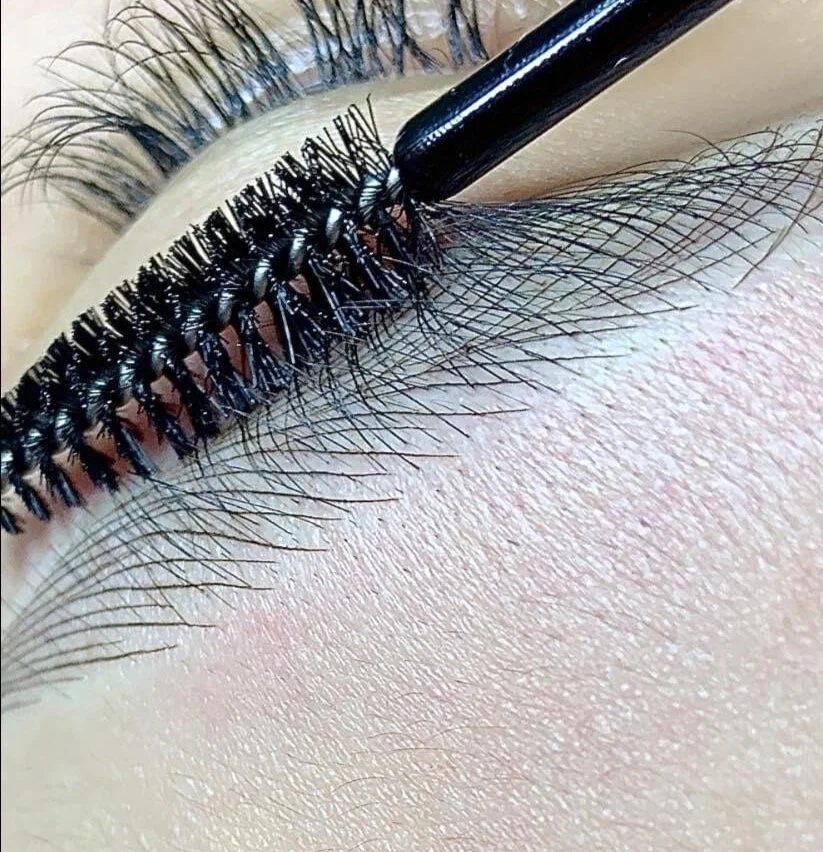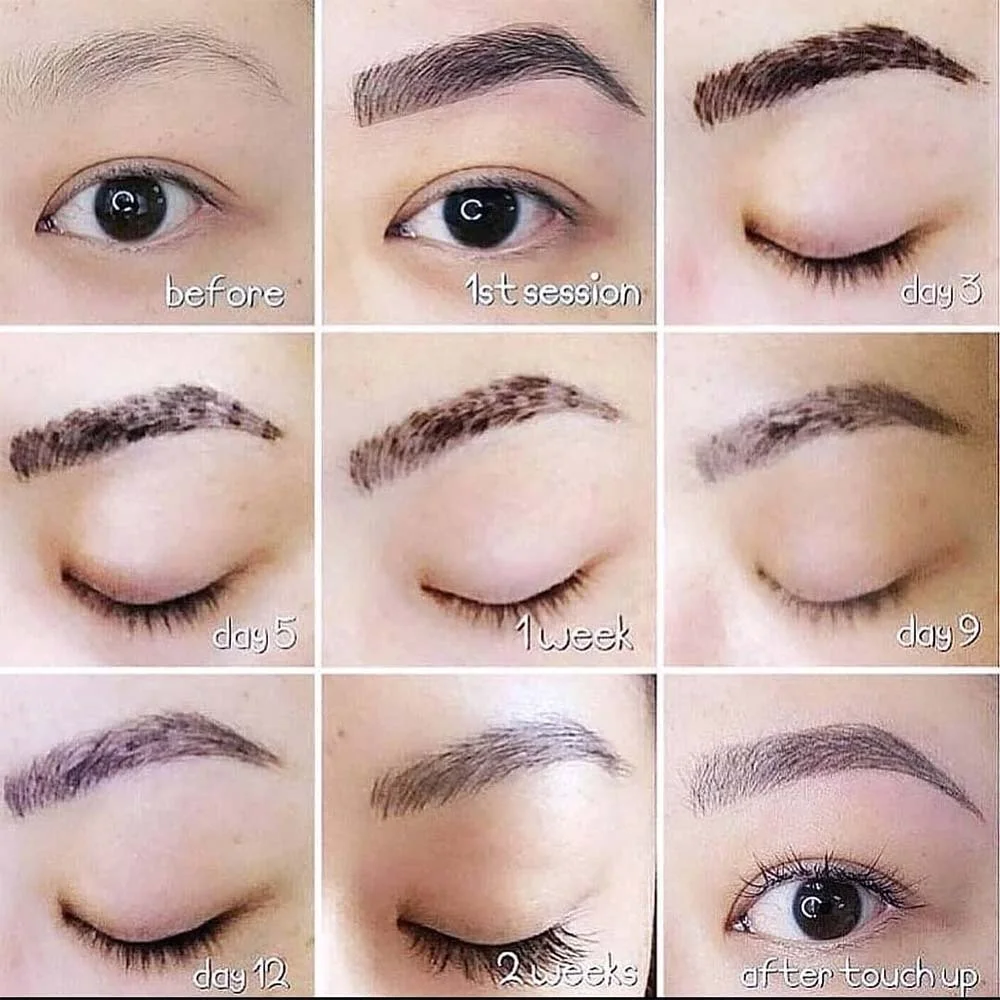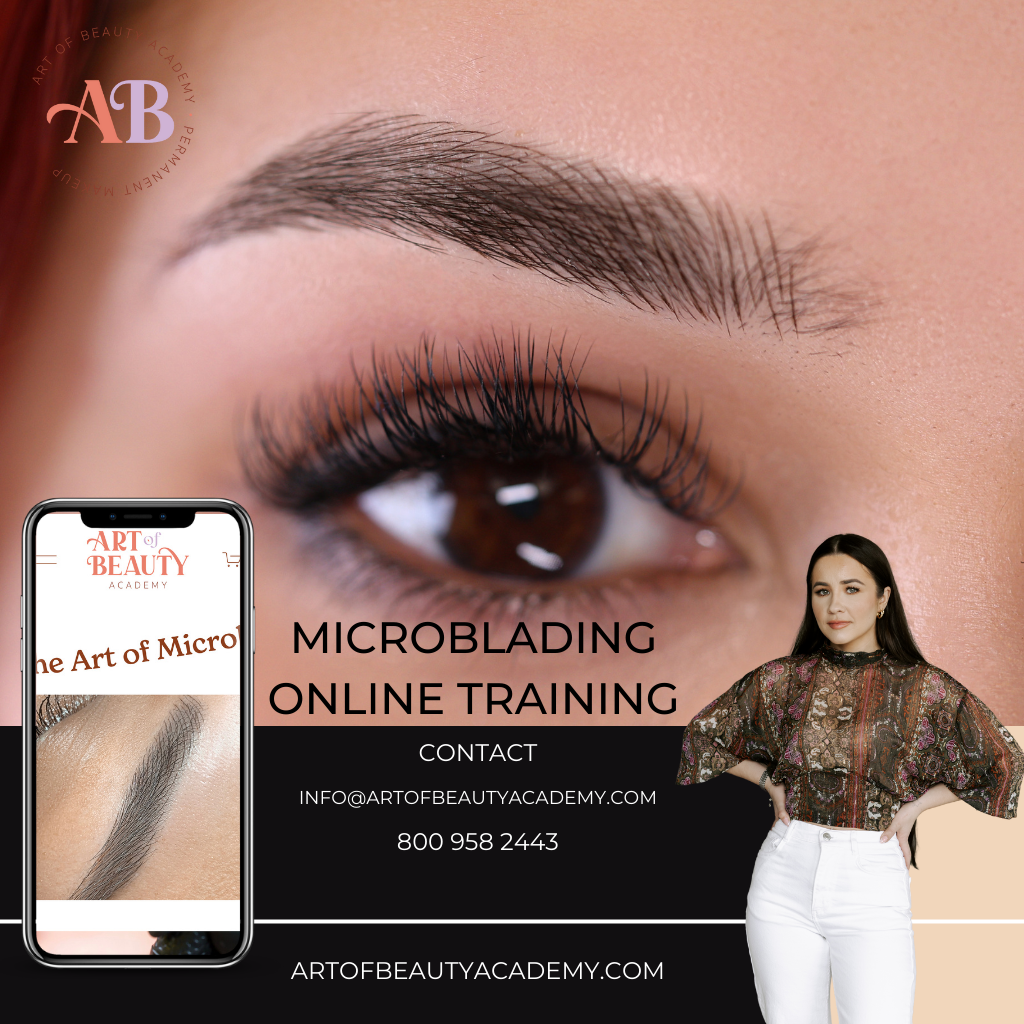Unlocking the Secrets of Microblading:
Your Comprehensive Guide
Dive into the world of microblading with our latest, all-encompassing guide. Explore everything you need to know about microblading, from effects and cost to side effects, aftercare, and witness stunning examples in our updated gallery.
Quick Facts to Pique Your Interest:
- Achieve a natural, hair-stroke effect.
- Executed with a precise manual blade.
- Long-lasting results of 12-18 months.
- Optimal with a recommended 6-8 week touch-up.
- Average price around $600.
Achieve Timeless Beauty with Microbladed Eyebrows
Discover the transformative world of full, perfectly shaped eyebrows – a beauty trend that's here to stay! Our eyebrow microblading treatment is your key to achieving the arches you've always dreamed of – meticulously crafted, thick, defined, yet authentically natural-looking.
Explore our ultimate guide to eyebrow microblading, where we unravel every aspect of this highly sought-after cosmetic tattoo procedure. Delve into a wealth of information, providing answers to all your questions about microblading eyebrows!
Table of Contents: Navigate to Your Desired Section
1. What Is Microblading?
2. How Long Does Microblading Last?
3. About Microblading Eyebrows
4. About Microblading Procedure
5. Microblading Aftercare
6. Microblading Healing Process
7. Microblading Touch Up
8. Microblading Side Effects
9. Microblading Removal
10. How Much Does Microblading Cost?
11. Benefits of Microblading
12. Microblading Popularity
13. Microblading – Key Takeaways
What Is Microblading?
Eyebrow microblading is a semi-permanent cosmetic procedure designed to enhance and redefine the shape and fullness of eyebrows. Also known as microstroking or eyebrow embroidery, microblading involves the meticulous application of pigments beneath the skin's surface using a handheld tool with ultra-fine needles. This technique creates precise, hair-like strokes that mimic natural eyebrow hairs, resulting in a remarkably realistic and natural appearance.
The process begins with a consultation to determine the client's desired shape and color, followed by a meticulous mapping of the brow area to ensure symmetry. Prior to the procedure, a topical anesthetic is applied to minimize discomfort. The microblading artist then uses the specialized tool to deposit pigment into the superficial layers of the skin, carefully crafting individual strokes that complement the existing brow pattern.
The procedure typically takes a few hours, and while there may be some initial darkening, the brows gradually lighten during the healing process. With proper aftercare and a follow-up touch-up session, clients can enjoy long-lasting, beautifully defined eyebrows, making microblading a popular choice for those seeking a semi-permanent solution to achieve flawless and well-defined brows.
SHOP DISPOSABLE MICROBLADING TOOLS
springs dermatology MD
How Long Does Microblading Last?
Discover the longevity of microblading, typically spanning 12-18 months. Uncover the factors influencing duration, including skin type, aftercare practices, and lifestyle choices. Maximize your results by adhering to aftercare instructions and adjusting your skincare routine for optimal preservation.
Who Is Microblading Good For?
Microblading caters to diverse needs, ideal for those with sparse brows, dissatisfaction with current brow shape or color, and individuals seeking a hassle-free alternative to daily makeup. It's especially beneficial for those without natural brows, addressing concerns like alopecia or hair loss.
Who Should Not Get Microblading?
Safety first! Understand why microblading might not be suitable for individuals with certain medical conditions or undergoing specific treatments. Consultation with a physician is advised for those uncertain about the procedure's safety.
Clients with immunodeficiency conditions
Clients with hemophilia or other bleeding disorders
Clients who’ve been diagnosed with diabetes should get a doctors consent.
Any clients currently taking or have recently took blood thinning medications (should consult with their physician)
Microblading and PMU is considered not safe for breastfeeding or pregnant women.
Clients prone to keloid scarring should avoid Microblading or other invasive skin procedures.
Clients must be off of Accutane 6 months before the scheduled treatment.
Clients who have viral infections/diseases or any of the following skin conditions near the treated area should avoid the procedure
Rosacea
Psoriasis
Skin irritations
About Microblading Procedure
How does the Microblading Procedure works and what are the steps?
Entrust your brows to certified microblading artists for a safe and satisfying experience. Learn about the meticulous steps involved in the 2-3 hour procedure, from consent forms and preparation to the final touches and aftercare instructions. Do in-depth research on your selected artist. Ensure the Artist has certified through extensive training under a reputable academy such as the Art of Beauty Academy. Ensure all before and after photos are verified and write down questions prior to booking a consultation.
Steps of the Microblading Procedure
The Microblading procedure involves many steps such as:
Step 1: Read and Sign the Consent form
Step 2: The skin must be washed and sanitized by the artist
Step 3: The Artist will Measure, Map and Draw the outline of the shape using an Eyebrow Measuring compass/Mapping Thread and Black pencil with the natural bone structure to determine the best shape.
Step 4: You will be given a mirror and the ability to give feedback on the shape for any changes.
Step 5: The Artist will Scissors and Tweezers to remove any unwanted hair outside of the shape to give a more bolder and precise brow shape
Step 6: Mixing and Matching pigment to the clients natural or desired hair color or undertone. (pigment preparation)
PreNumbing with Zensa Numbing Cream (light numbing)
Step 7: The Microblading Process begins using the 18U Microblading tool and blade
Step 8: Secondary Numbing with MaxiNumB immediately after the first pass
Step 9: Completing the second pass and details
Step 10: After cleaning the brows you will be given the opportunity to give feedback to approve or make any changes.
Step 11: Once complete the Artist will read over the after care instructions with you and demonstrate how to apply the healing cream Maxi-Heal for the next 14 days.
Step 12: 6 Month Touch up will be required
Does Microblading Hurt?
Feel at ease during the microblading process as most clients report minimal discomfort. MaxiNumb Maximum Strength Numbing gel ensures a more comfortable experience, with sensations like pressure, tingling, and slight stinging. Effective communication with your artist ensures a positive and personalized session.
How to Prepare for Microblading?
How to Get Ready for Microblading?
Proper preparation is crucial for the success of your microblading procedure. Adhere to these guidelines to ensure optimal healing outcomes:
Refrain from using retinol or Vitamin A products for at least one month before your scheduled treatment.
Avoid sunbathing or tanning for a minimum of seven days leading up to the microblading session.
Abstain from strenuous workouts on the day of the treatment.
Steer clear of alcohol, caffeine, ibuprofen, aspirin, and fish oil supplements for a minimum of 24 hours before your scheduled microblading session.
Refrain from plucking or waxing your eyebrows at least one week before the microblading treatment.
Do not undergo any facials at least two weeks prior to your scheduled microblading session.
If you've had Botox or fillers in the targeted area, wait at least two weeks before scheduling your microblading appointment. By following these steps, you can ensure that you are adequately prepared for the microblading procedure, setting the stage for favorable and effective results.
Microblading Aftercare
What is the Microblading Aftercare process?
Ensure the longevity of your microbladed eyebrows by adhering to aftercare instructions and using top of the line after care healing products like Maxi-Heal. Navigate the 2-week aftercare period, balancing wet or dry healing based on your artist's recommendation. Discover the do's and don'ts to prevent infections and support proper healing.
Proper aftercare is a crucial phase in the microblading process, typically spanning up to two weeks, after which the designated aftercare routine can be discontinued, allowing the eyebrows to continue healing naturally.
Throughout the aftercare period, it is imperative to steer clear of activities that might expose the brows to excessive moisture, such as swimming, prolonged showers, or sauna sessions. Regular and gentle washing of the eyebrows using sterile water and antibacterial soap is essential, followed by thorough drying.
Your permanent makeup (PMU) artist may advise either wet or dry healing. In wet healing, you should ask your client for Maxi Heal After care healing balm or ointment to apply post-cleansing. Dry healing, on the other hand, omits the use of an ointment but still necessitates regular eyebrow cleansing. It is vital to follow your artist's guidelines on product restrictions and strictly adhere to their recommendations.
Neglecting the prescribed microblading aftercare instructions not only jeopardizes the final results but also poses health risks, as it may lead to infections. Prioritize your aftercare routine to promote optimal healing and safeguard both the aesthetic outcome and your well-being.
How Long After Microblading Can I Wear Makeup?
Exercise patience post-microblading, refraining from makeup application on treated brows for about 2 weeks. While makeup is permissible on other facial areas, caution is advised to protect the sensitive healing brows.
Microblading Healing Process
There is a month-long healing process with microblading. Witness initial swelling, the scabbing stage, lightening, and potential patchiness. Plan for the mandatory touch-up after 4-6 weeks to refine and perfect your brows.
Microblading Touch Up
Understand the significance of the first touch-up in achieving optimal results. Schedule this crucial step 4 weeks post-initial treatment, ensuring any imperfections are addressed for a flawless outcome. The frequency of touch-ups varies based on individual fading and skin type.
Microblading Side Effects
Microblading is generally a safe and effective procedure for achieving well-defined and natural-looking eyebrows. However, like any cosmetic treatment, it comes with potential side effects. It's important for individuals considering microblading to be aware of these possible effects:
Redness and Swelling:
Mild redness and swelling around the treated area are common and typically subside within a few hours to a day.
Itching and Tenderness:
- Some individuals may experience itching or tenderness during the initial healing phase, which usually lasts a few days.
Darkening of the Brows:
- Immediately after the procedure, the brows may appear darker than expected. This is a normal part of the healing process and usually lightens over time.
Flaking and Scabbing:
- As the eyebrows heal, flaking and scabbing may occur. It's crucial not to pick at the scabs to prevent scarring or uneven pigmentation.
Uneven Color or Fading:
- In some cases, the color of the microbladed eyebrows may initially appear uneven. Fading can also occur during the healing process, and a touch-up session may be required to achieve the desired results.
Allergic Reactions:
- Though rare, allergic reactions to the pigments or numbing creams used in microblading can occur. It's essential to undergo a patch test before the procedure to identify potential allergies.
Infection:
- Poor aftercare or exposure to bacteria can lead to infections. It's crucial to follow the recommended aftercare instructions to minimize the risk of infection.
Keloid Formation:
- Individuals prone to keloid scarring may be at risk of developing raised scars in the treated area.
Changes in Color over Time:
- The color of the microbladed eyebrows may evolve over time due to factors such as sun exposure and skin type.
Migration of Pigment:
In rare cases, the pigment may migrate beyond the intended area, resulting in a less precise appearance. This underscores the importance of choosing a skilled and experienced microblading artist.
Unsatisfactory Results:
Despite careful planning, there is a possibility of not achieving the desired results. This underscores the importance of realistic expectations and open communication with the microblading artist.
It's essential for individuals considering microblading to thoroughly discuss potential side effects with their microblading artist, adhere to aftercare instructions diligently, and be aware that individual responses to the procedure can vary.









